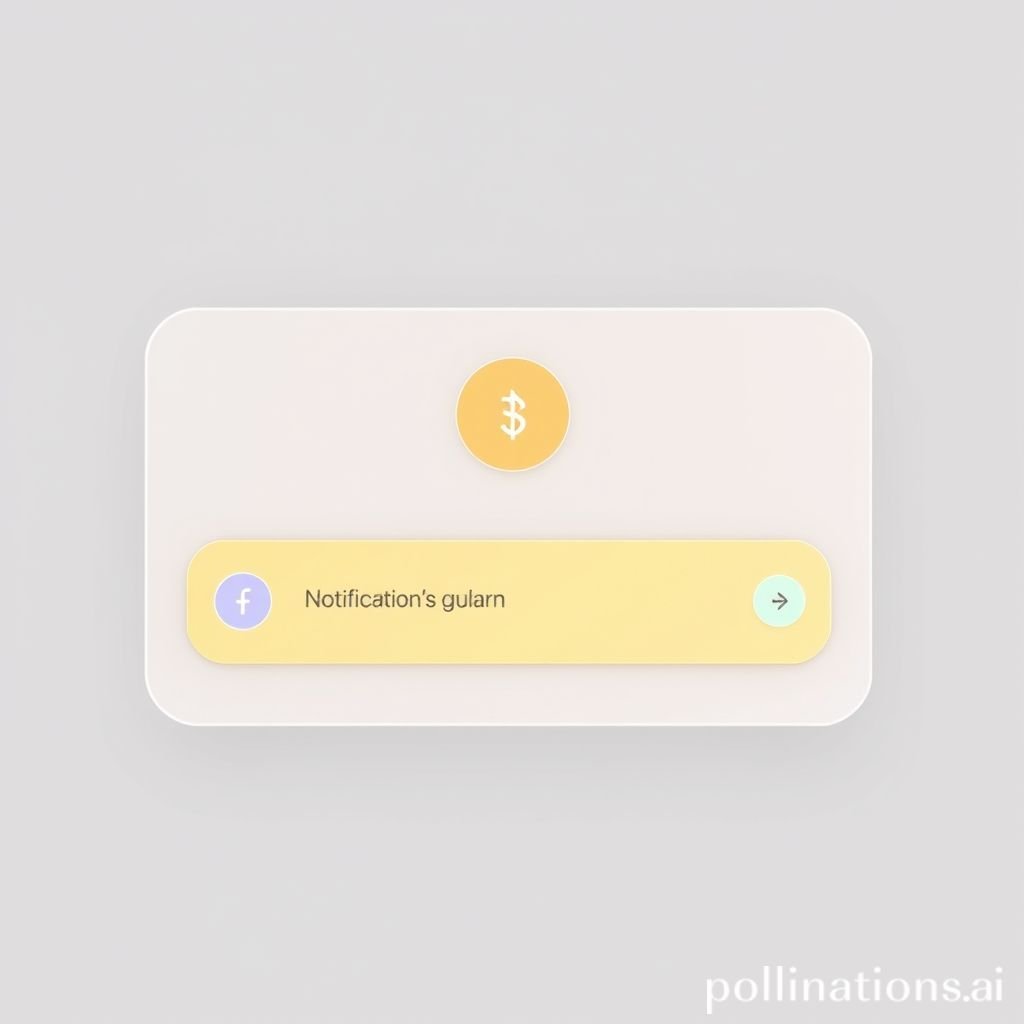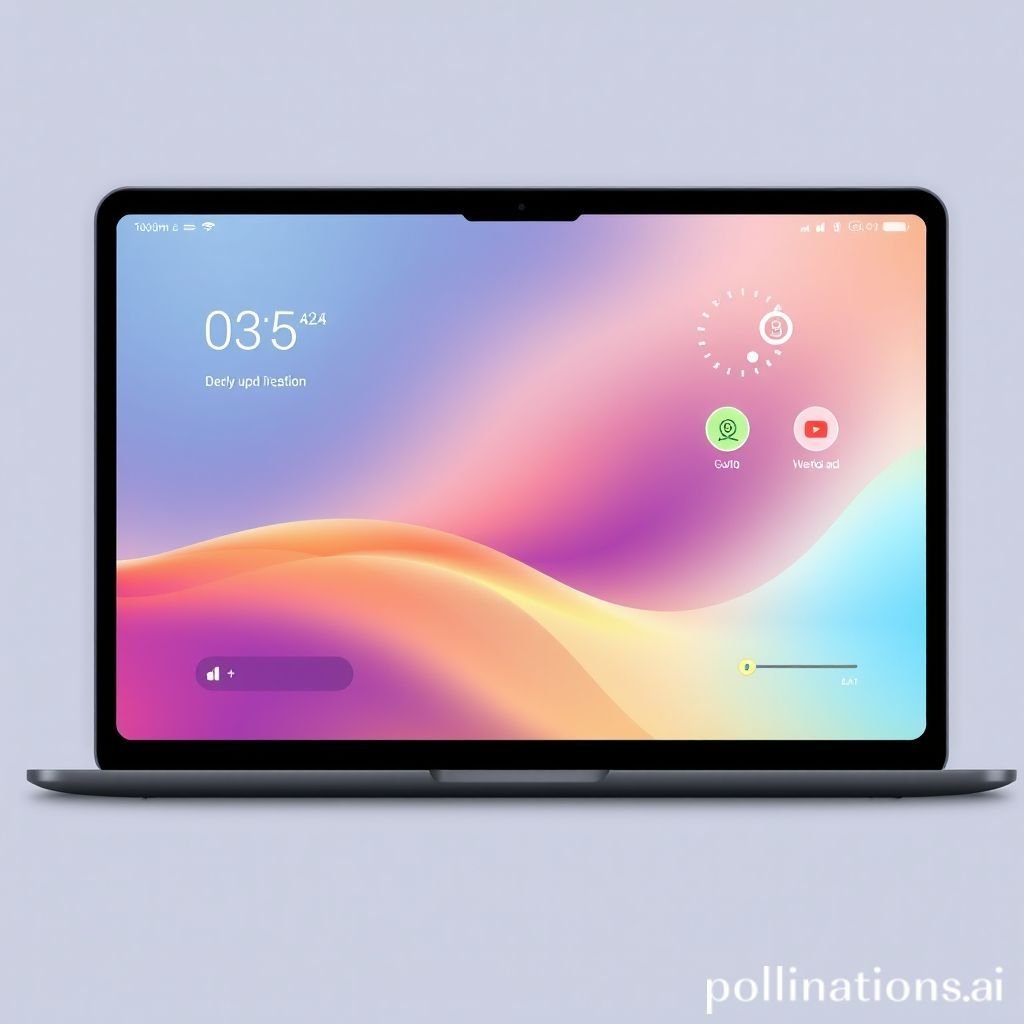Enhancing User Experience with Soft UI Notification Pings
Meta Description: Discover the power of soft UI notification pings. Learn how these subtle alert sounds improve user experience, application feedback, and digital interaction without disruption.
The modern UI is more than just visual elements; it's an immersive experience, and sound plays a pivotal role in shaping user perception and interaction. Among the myriad of audio cues, the "soft UI notification ping" stands out as a deceptively simple yet profoundly effective tool for communicating information. These gentle, unobtrusive audio effects are designed to provide immediate feedback without causing disturbance, making them indispensable across a vast array of digital applications. From indicating a new message in a chat application to confirming a successful action on a website or a subtle alert on a mobile device, a well-crafted soft UI ping enhances the user's journey, making digital interactions feel more intuitive and responsive. This particular type of UI sound effect is engineered for clarity and brevity, ensuring that the user understands the message instantly, without diverting their full attention from their primary task. Its practical applications span across various platforms, including mobile apps, web interfaces, desktop software, and even IoT devices, embodying the principle of subtle but significant auditory feedback.
Applications in Media
The soft UI notification ping, though often heard in everyday applications, holds significant potential and existing presence within various media contexts. Its inherent subtlety makes it ideal for situations where a prominent audio cue would be jarring, yet some form of feedback is necessary. This quiet efficiency makes it a darling of media designers.
Industry-Specific Uses
In film and television, these gentle pings are often employed as diegetic sounds—sounds that characters within the story can hear. Think of a smartphone notification in a scene, a subtle alert from a futuristic console, or a data transfer confirmation. They provide a layer of realism and enhance the narrative by indicating off-screen events or device interactions. In gaming, soft UI pings are crucial for conveying non-critical information: a friend coming online, an item successfully picked up, or a minor objective completed. They provide positive reinforcement without distracting from intense gameplay, contributing to a fluid and immersive user experience. Educational software and e-learning platforms use these sounds to confirm quiz answers, module completion, or progress milestones, offering gentle encouragement. In the burgeoning field of virtual and augmented reality, soft UI pings are vital for spatializing interactions, indicating elements appearing or disappearing in the user's field of view, providing a seamless auditory layer to the virtual UI.
Creative Techniques
Beyond their functional role, soft UI pings can be used creatively to evoke specific emotions or build atmosphere. A slightly detuned ping might suggest an error or malfunction, while a pristine, bell-like notification could signify success or a positive outcome. Designers can vary the timbre and decay of the ping to convey different levels of urgency or importance. For instance, a very short, crisp sound might signify a quick, transient event, whereas a slightly longer, fading tone could indicate a background process completion. In interactive installations or art projects, these sounds can serve as subtle triggers or confirmations of user input, adding an auditory dimension to the interaction without overpowering the visual or conceptual elements. The skillful application of these UI sounds can elevate the overall aesthetic and functional quality of any digital product.
Technical Analysis
Understanding the technical characteristics of a soft UI notification ping is crucial for both its creation and effective deployment. These sounds are not arbitrarily generated; they are carefully sculpted waveforms designed to achieve specific auditory goals.
Waveform Characteristics
A typical soft UI notification ping waveform is characterized by a rapid attack, meaning the sound reaches its peak amplitude almost instantly. This contributes to its immediate recognition. Following the attack, there's usually a quick decay, often exponential, meaning the sound fades out rapidly. This short decay ensures the sound doesn't linger, preventing it from becoming annoying or disruptive. The sustain phase is often non-existent or extremely brief, reinforcing the transient nature of the alert. The release phase is equally short, allowing the sound to vanish cleanly. Visually, this translates to a sharp spike followed by a quick downward slope on an amplitude-over-time graph. This compact envelope ensures the ping is heard and processed quickly by the brain, allowing the user to return to their primary task without distraction. This concise waveform is a hallmark of good UI sound design. (Image ALT: Soft UI Notification Ping sound waveform visualization)
Frequency Profile
The frequency profile of a soft UI notification ping typically resides in the mid to high-frequency range (e.g., 2kHz to 8kHz). This range is chosen because it cuts through ambient noise effectively without being overly loud or abrasive. Lower frequencies tend to be more resonant and can feel heavier, while very high frequencies can be piercing or fatiguing. The sweet spot chosen for these UI pings provides clarity and distinctiveness. Often, these sounds incorporate a subtle frequency sweep, where the pitch slightly rises or falls over the brief duration of the sound. This slight modulation adds character and helps the sound feel more natural and less like a static tone. A rising pitch often conveys a sense of completion or positivity, while a falling pitch might indicate an error or withdrawal. The precise tuning of these frequencies is vital for creating a pleasant and effective auditory notification.
Production Tips
Crafting the perfect soft UI notification ping requires attention to detail in both recording and editing, alongside the strategic use of digital audio workstations.
Recording/Editing
When creating a soft UI ping, the source material is paramount. Pristine recordings of small chimes, subtle bell sounds, or even specific percussive elements can serve as excellent starting points. Ensure the recording environment is as quiet as possible to minimize unwanted room noise or reverb. Once recorded, meticulous editing is necessary. Trimming silence from the beginning and end of the sound is crucial to ensure an instant response. Applying gentle equalization (EQ) can help shape the frequency profile, boosting desired characteristics and cutting harsh or muddy frequencies. Compression can be used subtly to control dynamics, making the ping consistent in volume. Finally, a short, precise fade-out or a transient shaper can refine the decay, ensuring the sound ends cleanly without abrupt cuts. Think of it as sculpting the perfect auditory alert.
Software Tools
Digital Audio Workstations (DAWs) like Ableton Live, Logic Pro X, Pro Tools, or Reaper are indispensable for creating and refining soft UI notification pings. These platforms offer precise control over waveform editing, EQ, compression, and effects. Synthesizers, both hardware and software, are also valuable for generating custom ping sounds from scratch, offering unparalleled control over timbre and pitch. Samplers can be used to manipulate existing audio, allowing for creative stretching, pitching, and layering. Plugins like transient shapers can help emphasize the attack or soften the decay. Reverberation and delay effects should be used sparingly, if at all, to maintain the desired dryness and immediacy of the notification. Tools from companies like Pro Sound Effects offer high-quality libraries that can serve as excellent foundations or inspirations for custom UI sounds.
Creative Implementation
Beyond the basic sound, the integration of soft UI pings into an interface can be elevated through creative techniques like layering and spatial effects, enhancing the overall user interface experience.
Layering Methods
Layering different subtle audio elements can add richness and complexity to a simple UI ping without making it intrusive. For instance, combining a short, percussive click with a very faint, rising synthetic tone can create a nuanced notification. A tiny, almost subliminal, airy whoosh could precede the main ping to give it a sense of motion or anticipation. The key to successful layering is subtlety; each element should be barely audible on its own, only contributing to the overall character when combined. This prevents the sound from becoming cluttered or overwhelming, maintaining the "soft" aspect of the UI ping. Experimenting with different timbres and very short durations for each layer can yield unique and effective results for various UI actions.
Spatial Effects
While soft UI pings are typically concise, judicious use of spatial effects can enhance their impact, particularly in immersive environments. A very short, barely perceptible reverb can give the ping a sense of existing within a specific digital space, making the UI feel more integrated. In 3D interfaces or VR/AR applications, panning can be used to indicate the direction of a new message or alert, guiding the user's attention without explicit visual cues. For example, a chat notification might emanate slightly from the left if the conversation window is on that side. Stereo widening effects, applied subtly, can make the ping feel more expansive without losing its sharpness. The goal is to make the sound feel naturally placed within the user's auditory field, contributing to a seamless and intuitive UI experience.
Sound Pack Integration
Integrating a soft UI notification ping into a larger audio design requires thoughtful consideration, especially when sourced from a comprehensive sound pack. Such a pack often contains a variety of carefully curated UI sound effects, designed to work harmoniously.
Using with Other Sounds
When using a soft UI notification ping from a sound pack, consider its acoustic relationship with other UI sounds within the same collection. Sound packs are typically designed with consistency in mind, meaning that various notification and alert sounds will share a similar sonic signature or tonal palette. This ensures a cohesive auditory experience across your application. For example, a confirmation ping might be slightly higher in pitch than a navigation click, but both will likely share a similar decay characteristic or frequency range. Mixing and matching sounds from different packs should be done cautiously to avoid an inconsistent or disjointed user interface. A well-chosen UI sound will complement, rather than clash with, other auditory cues. Remember to consider Related UI sounds from the same library to maintain sonic consistency.
Complete Collection
A soft UI notification ping is just one component of a holistic sound design. To truly elevate your application's user experience, consider utilizing a complete sound pack. These comprehensive collections offer a wide array of sounds—from button clicks and transitions to errors and success indicators—all designed to work together seamlessly. Investing in a full pack ensures that every auditory UI element feels unified and professionally produced. This consistency is vital for creating a polished and intuitive user interface that enhances usability and leaves a lasting positive impression on users. Integrating diverse yet harmonized audio elements will make your application stand out. Get the full sound pack for comprehensive audio solutions.
FAQ
Q1: What is a soft UI notification ping and why is it important for user experience? A1: A soft UI notification ping is a subtle, brief sound effect designed to provide non-intrusive feedback for actions or events in digital interfaces. It's important for UX because it delivers immediate alert feedback without distracting the user, enhancing the intuitiveness and responsiveness of the UI.
Q2: How can I ensure my UI ping sounds are not annoying or disruptive? A2: To prevent your UI ping from being annoying, ensure it has a short duration, a clean decay, and resides in a pleasant frequency range (mid-to-high). Avoid excessive volume, long sustain, or harsh, resonant tones. The goal is a subtle and unobtrusive notification.
Q3: What are some common applications where a subtle alert ping is used? A3: A subtle alert ping is commonly used in messaging apps for new message notification, e-commerce sites for transaction confirmation, mobile apps for successful actions, and games for non-critical event feedback. Its versatility makes it a cornerstone of modern UI sound design.
Q4: Can I customize the frequency or pitch of a UI notification ping? A4: Yes, you can absolutely customize the frequency and pitch of a UI notification ping. Adjusting these elements can convey different meanings; a rising pitch often indicates success, while a falling pitch might signify an error. This level of control allows for precise and effective auditory alert cues.
Q5: Are there professional sound packs available that include soft UI pings and other UI sound effects? A5: Yes, many professional sound packs are specifically designed for UI sound effects, including a variety of soft notification pings and other related audio cues. These packs ensure high-quality, consistent sounds that integrate seamlessly into your application, providing a cohesive and polished UI experience.





